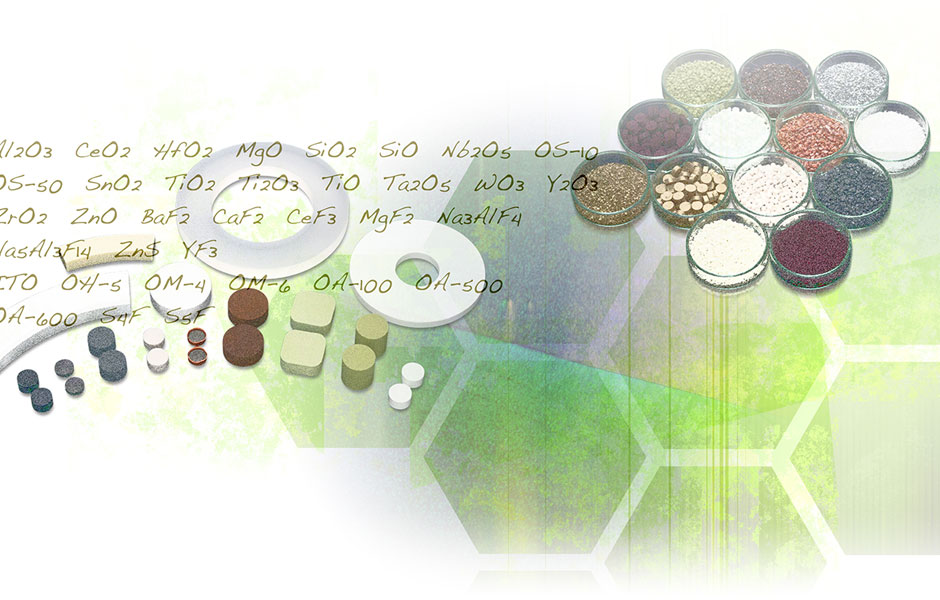Types of evaporation materials
| Constituents | At least 50 types |
|---|---|
| Form | Molded (tablet-shaped, fan-shaped, ring-shaped), granules etc. |
Constituents
Many evaporation materials are produced by baking metal oxides until they become solid. Besides these, they may also be fluorides, metals, and organic substances. There are also materials made by dissolving substances.
Canon Optron has over 50 types of evaporation materials, each with their own unique properties due to their constituents. When they are applied to the substrate, forming a few layers of thin film, they can fulfil various functions.

Shapes
Evaporation materials come in different shapes: tablet-shaped, fan-shaped, ring-shaped, granules, etc. The best shape to use depends on the coating equipment and the intended uses of the coating.
Unique features
| Molded | Molded deposition materials are easier to handle. |
|---|---|
| Granules | Evaporation materials in granule form can be easily topped up when necessary. Ideal for continuous evaporation. |

Special evaporation materials
- Thermal shock-resistant molded materials that can withstand the strong energy from electronic beams
- Degassing products that can keep the volume of gas released by the deposition source low so that the strength and durability of the thin film formed is not negatively affected
Canon Optron has around 750 products that include different combinations of shapes and constituents.